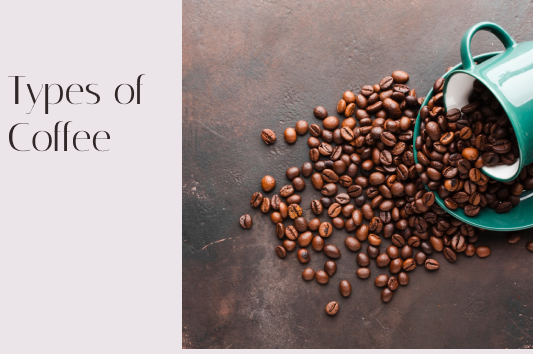What is Coffee?
Coffee is a brewed drink that is appreciated globally for its rich flavor and stimulating properties. It is made by extracting the essence of roasted coffee beans with hot water, which releases its distinctive aroma and taste.
The coffee we enjoy today is made from the seeds of berries from certain Coffea species. These seeds, commonly referred to as coffee beans, are roasted to varying degrees, depending on the desired flavor, before being ground and brewed.
Coffee originates from tropical Africa, specifically from regions around Ethiopia and Sudan. Historically, it was first cultivated and traded in the Arab world before spreading to Europe and across the globe in the 17th century.
Today, coffee is consumed by people worldwide, making it one of the most popular drinks. Its appeal spans across different cultures and continents, and it is enjoyed in numerous forms and preparations, catering to a wide range of tastes and preferences.
One of the key components of coffee is caffeine, a natural stimulant that affects the central nervous system. Caffeine in coffee can help improve mental alertness and reduce feelings of fatigue, making coffee a popular choice for starting the day or boosting energy levels.

History of Coffee
Coffee has a rich and legendary history that dates back centuries, with accounts of its discovery and transmission throughout the world. As a colonial import, coffee has become one of the most widely consumed beverages globally.
Legendary accounts
Long ago, people found out about coffee in an exciting way. A goat herder named Kaldi noticed his goats were dancing after eating some red berries from a bush. Curious, Kaldi tried the berries himself and felt wide awake.
He shared this discovery with a monk, who made a drink from the berries and found it kept him alert during long prayers.
Tales like these spread far and wide as more folks learned about the zing coffee gave them. Some say mystic Sufis used coffee to stay up at night for their rituals. Over time, this magical bean’s fame grew throughout lands near and far, making everyone want to have a taste of its power to wake up tired minds and bodies.
Historical transmission
Coffee’s historical transmission dates back to the 15th century when it was first introduced to the Arabian Peninsula. From there, it spread through trade and colonization to Persia, Egypt, and Syria.
By the 17th century, coffee had found its way to Europe, becoming popular in England and then in France. The first coffeehouse opened in Italy during this time as well.
It wasn’t long before coffee made its way across the Atlantic Ocean to North America. In the 18th century, colonial powers began cultivating coffee in their tropical colonies such as Central and South America and Southeast Asia.
This allowed for mass production of coffee which led to its widespread consumption worldwide.
As a colonial import
Coffee was originally found in Ethiopia, but it spread worldwide during the colonial period. The Dutch and French were the first to introduce coffee to their colonies in Southeast Asia and Central America.
This expansion was driven by the growing demand for coffee in Europe. By the 18th century, European colonial powers established large-scale coffee plantations in their colonies, shaping the global coffee trade as we know it today.
The popularity of coffee as a colonial import resulted in significant economic and social impacts across the world. It led to the establishment of powerful multinational corporations that controlled much of the production and trade of this valuable commodity.
Mass production
Coffee mass production involves large-scale cultivation, processing, and packaging of coffee beans to meet global demand. Brazil leads in the mass production of coffee, with a third of the world’s supply originating from this country.
The mechanization of harvesting and processing has greatly increased productivity and efficiency. Coffee consumption has risen over the years, driving the need for mass production to keep up with demand.
This has led to an increase in sustainable farming practices and fair trade initiatives to support both producers and consumers.
Anatomy of a Coffee Cherry
The coffee cherry is like a small fruit, and inside it are the coffee beans. These beans are actually the seeds of the fruit. The skin of the cherry is called the exocarp, beneath this is a layer known as the mesocarp, and then comes another thin layer called parchment.
Inside this parchment is where you find two beans facing each other.
Each bean has its own protective film; these are referred to as silver skin and pellicle. After removing all these layers through a process known as milling, what’s left behind are green coffee beans ready for roasting.

It’s amazing that from this little fruit comes one of the world’s most beloved beverages.
The growth of these cherries happens on trees that can grow up to 30 feet high; they yield only about two pounds per year but need very specific conditions for cultivation such as high altitude and steady rainfall.
Types of Coffee
Arabica and Robusta are the most common types of coffee beans used for brewing your favorite cup of joe. Understanding the differences between these two varieties can help you discover new flavors and find your perfect brew.

Arabica
Arabica coffee is the most popular type of coffee grown worldwide. It originates from Ethiopia and is known for its smooth, mild flavor with pleasant acidity. This type of coffee accounts for about 60-70% of the world’s total coffee production and is highly prized for its aromatic qualities.
Arabica beans are also lower in caffeine compared to other types like Robusta, making them a preferred choice for many specialty coffee drinks such as lattes, cappuccinos, and mochas.
Furthermore, Arabica plants require specific growing conditions such as high altitudes and a cool climate with plenty of rainfall. The optimal temperature range for growing Arabica coffee is between 15-24°C (59-75°F).
Robusta
Robusta coffee beans are known for their strong, harsh flavor and higher caffeine content compared to Arabica beans. They are mainly grown in warmer climates at lower altitudes, particularly in Africa, Southeast Asia, and Latin America.
Robusta beans have a rounder shape than Arabica beans and contain almost twice as much caffeine. This type of coffee is often used in espresso blends due to its ability to produce a rich crema on top of the brew.
Now that we’ve explored the characteristics of Robusta coffee beans, let’s delve into how coffee is made from these different types of beans.
How Coffee is Made
Coffee is made through a series of steps including cultivation, production, processing, roasting, and decaffeination. Each step contributes to the unique flavor and aroma that coffee lovers enjoy.

Cultivation and production
Coffee cultivation and production involve several stages, beginning with the careful planting of coffee seeds in well-drained soil. After about three to four years, the coffee trees start yielding ripe cherries.
The harvesting process can be done by hand-picking or strip picking using machinery. Once harvested, the coffee cherries undergo processing which can either be dry or wet processing methods.
Following this, the beans are roasted at precise temperatures to bring out their distinct flavors and aromas, ready to be ground and brewed into a delightful cup of java by skilled baristas.
Brazil alone is responsible for producing nearly a third of the world’s coffee supply through its expansive plantations. The country’s favorable climate and geographic conditions make it an ideal location for growing high-quality Arabica beans that are highly sought after globally.
Processing
After the coffee beans are harvested, they go through processing to remove the outer layers and reveal the inner seed. There are two primary methods of processing: dry processing and wet processing.
In dry processing, the whole cherries are spread out in the sun to dry before being hulled to reveal the beans. This method is traditional but requires careful monitoring to prevent mold growth.
On the other hand, wet processing involves removing the skin from the cherries using water before fermenting them for a day or two, then washing and drying them. This method results in cleaner and brighter flavors.
Once dried, the beans are sorted by size and density to ensure consistency in flavor during roasting. After sorting, they undergo roasting where high temperatures transform their chemical composition into aromatic oils that give coffee its distinct flavor profile.
Roasting
Coffee roasting is a crucial step in the coffee-making process. The green coffee beans are heated in a rotating drum at high temperatures, causing them to change color and develop their distinct flavor.
During this process, the beans lose moisture and expand in size while undergoing physical and chemical changes. The longer they roast, the darker they become, leading to different flavor profiles.
For instance, light roasts have a milder taste with higher acidity, while dark roasts have a bold and intense flavor.
The temperature range during roasting greatly influences the final taste of the coffee. Moreover, it’s essential to cool the beans quickly after roasting to prevent them from overcooking.
Decaffeination
Coffee decaffeination is a process that removes caffeine from coffee beans. There are different methods for decaffeinating coffee, including the solvent-based method using ethyl acetate or methylene chloride, and the Swiss Water Process which uses water and activated charcoal to extract caffeine.
The carbon dioxide method involves carbon dioxide under high pressure to remove caffeine. Another method is the use of supercritical carbon dioxide as a solvent in which the CO2 binds with the caffeine molecules, allowing for their extraction.
Decaffeination allows individuals to enjoy the taste of coffee without the stimulating effects of caffeine, making it suitable for those sensitive to its effects or looking to reduce their overall caffeine intake.
The decaffeination process is essential in providing options for those who love coffee but want to avoid excessive caffeine consumption while still enjoying its rich flavor. Understanding how this process works can help consumers make informed decisions about their coffee choices based on their health needs and preferences, ensuring that everyone can savor a delicious cup of coffee according to their individual tastes.
Health Benefits and Consumption of Coffee
Coffee offers various health benefits, such as being a significant source of antioxidants that help the body fight inflammation. Consuming 3 cups of coffee per day reduces the risk of cardiovascular disease.
Additionally, it contains more flavonoids than wine, making it a rich source of antioxidants.
Moreover, drinking coffee in moderation has been associated with a lower risk of certain diseases like Parkinson’s and Alzheimer’s. It is also linked to improved physical performance and increased metabolism.

However, excessive consumption can lead to negative effects such as anxiety and disrupted sleep patterns.
Overall, moderate consumption of coffee can positively impact health by providing essential antioxidants and reducing the risk of certain diseases while enhancing physical performance.
Now let’s delve into the different types of coffee that are popular around the world.
Conclusion
In conclusion, understanding the history and anatomy of coffee provides insight into its significance as a global beverage. Appreciating the health benefits and cultivation process highlights the practicality and efficiency of incorporating coffee into daily life.
The impact of antioxidants in coffee on overall health reinforces its importance as a source of wellness. Further exploration into types and production methods can offer additional resources for coffee enthusiasts to deepen their knowledge.
Let’s savor our cup of coffee, knowing that it is not just a beverage but a fascinating journey from plant to mug.

